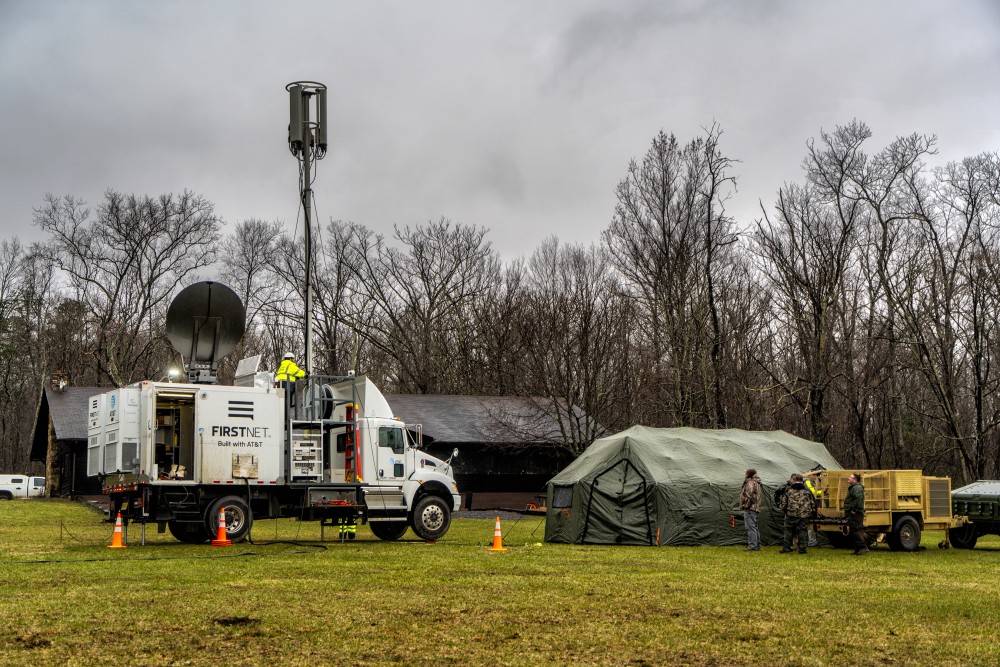
September is National Preparedness Month, FEMA’s annual campaign to promote disaster and emergency planning. This year’s campaign theme is Prepared Not Scared.
As a former emergency management professional in the state of Texas, I can attest that for most public safety professionals, every month is Preparedness Month. One of the best ways that public safety can be prepared for emergencies and disasters is with FirstNet, the nationwide public safety broadband network. The First Responder Network Authority (FirstNet Authority), an independent federal entity, established a public-private partnership with AT&T to deploy FirstNet in all 50 states, 5 territories and the District of Columbia for seamless emergency communications.
Because FirstNet is for public safety, by public safety, the network incorporates many of the backups important in preparing for emergencies. FirstNet is an important resource in a disaster readiness toolkit. Here are three things to know about FirstNet.
1. Individual first responders can self-subscribe to FirstNet
I encourage every public safety professional to subscribe to FirstNet as an important resource in preparedness. Did you know individual public safety professionals can sign up for FirstNet on their personal accounts? Mobile plans for subscriber-paid users are available for verified first responders to get FirstNet service right away – giving you network priority when disaster strikes. Career and volunteer first responders both qualify for this opportunity. You can learn more by visiting FirstNet.com or walking into any AT&T retail store.
2. FirstNet coverage and capacity is not the same as commercial coverage and capacity
Today, the network is a little over one year into a five-year buildout of FirstNet-dedicated spectrum—called Band 14. As of August, AT&T has deployed FirstNet spectrum in more than 650 markets. This is bringing additional capacity to first responders, as well as additional coverage where public safety said they need it the most. FirstNet users are already experiencing benefits from the initial buildout including higher speeds, even during large crowds. To expand the network, Band 14 is being added to existing infrastructure and new towers are being built in underserved areas like rural and tribal communities. We look forward to continuing Band 14 deployment over the next few years, bringing more first responders the coverage and capacity they need.
3. FirstNet is ready to give you instantaneous priority
Preparedness as a responder means being ready for calamity so you are immediately able to help others. With FirstNet, the network is always ready to give you the priority that you need to react. FirstNet is not a regular consumer cellular network or a new and improved feature on an existing network. FirstNet has a totally dedicated core infrastructure – the brains and nervous system of the network – that is only for public safety. And on FirstNet, you are recognized as an emergency responder and thus a priority user wherever you go – you no longer have to compete with consumer traffic to fulfill your mission. When you need to connect, even during times of network congestion, you can because the network gives you priority access with the ability to preempt non-public safety users to get on the network – no action necessary.
This September when you are thinking about disaster preparedness, think about FirstNet. With FirstNet, public safety has quality of service, priority, and preemption on a network built to provide a resilient, hardened connection during disasters.
To learn more about the FirstNet Authority’s public safety programs visit FirstNet.gov. To learn more about FirstNet products and services visit FirstNet.com.
HPN Contributing Author Lesia Dickson is the Senior Public Safety Advisor for Emergency Management for First Responder Network Authority, as well as Director of Field Operations in the North Central area.




